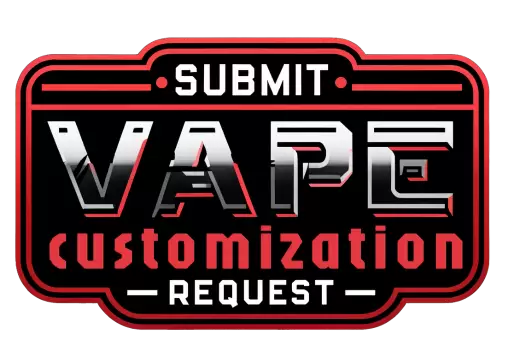Vape cartridges, often referred to simply as “vape carts,” are an integral component of modern vaping devices, delivering the convenience and precision that appeals to both novice and experienced users. Understanding how to properly handle, open, and maintain a vape cartridge is essential for ensuring optimal functionality and an improved vaping experience. This guide will provide a detailed and authoritative framework on the structure of vape cartridges, the proper techniques for opening them, and key tips to avoid potential mishaps. Whether you are troubleshooting an issue, refilling your cartridge, or simply curious about its design, this comprehensive resource will give you all the information you need to proceed confidently and safely.
Why Would You Need to Open a Vape Cart?
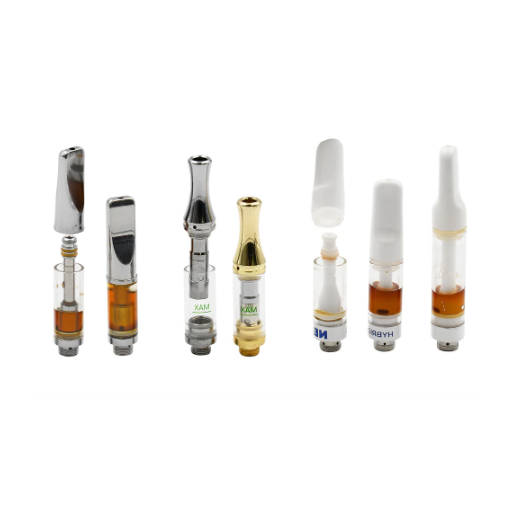
Refilling Your Vape Cartridge with E-liquid
Refilling a vape cartridge is cheaper because the users’ flavors and nicotine concentrations can be selected freely and can be customized. Here is the procedure to refill a cartridge:
- Disassemble the Cartridge: Depending on the design of the cartridge, the mouthpiece may be unscrewed or pulled off. Carefully detach the mouthpiece, applying minimal force to threading and seals to avoid damage.
- Check Compatibility: Ensure that the cartridge refillable is not a disposable one. Disposable cartridges cannot be refilled and tend to cause leakage or device dysfunction.
- Select the Appropriate E-liquid: Decide the type of e-liquid. For this step is the viscosity, low or high, is adequate for your type of cartridge.
- Refill the Cartridge: For this step you will need, a good quality syringe or dropper. While inserting the e-liquid, use the finest tip dropper or syringe while filling the cartridge to prevent overfilling. If too much refilling is done, air pressure will build up.
- Reassemble and Prime: Allowing the cartridge to sit after securely reattaching the mouthpiece will enable the wick to saturate fully which will eliminate the likelihood of dry hits.
Following these instructions while keeping the technical limitations of your device in mind will grant you the best vaping experience possible while avoiding leaks, clogs, and other performance problems.
Fixing a Clogged or Faulty Cartridge
The following steps aim to troubleshoot and resolve a clogged or broken cartridge problem.
- Inspect the Airflow: Check for blockage at the airflow openings. If there is some debris present, use a small pin/cotton swab to remove it and avoid damaging other exposed parts.
- Adjust the Voltage Settings: Review the device’s voltage configuration. Low voltage may fail to vaporize the liquid, and aggressively high voltage tends to burn out the coil. Refer to the cartridge specifications so it can be operated within the recommended voltage range, usually between 2.5V and 3.7V.
- Preheat Or Prime The Cartridge: If the cartridge does not draw, attempt to preheat the device. Most modern vape batteries have preheat options which assist in warming the liquid for easier flow through the coil and wick. Manually priming means trying to remove the clog through short weak draws while the heating element is off, so it is easier to pull any possible obstructions.
- Check for Leaks: Leaks under the cartridge can contribute to clogs. Base leakage often accompanies overfilled or overly worn cartridges. If a leak is revealed, clean it and check if the gaskets are operational.
- Change or Fix the Coil: If the problem remains the same, the coil could be burnt or faulty. If it is within your device’s capabilities (and allows for it), replace the coil with one that is compatible with the cartridge and matches the manufacturer’s specifications. If you cannot replace the coil, then perhaps you should look into getting a new cartridge.
When following this method, you’ll be able to resolve most clogging and operational issues side by side, restoring optimal functionality to your device.
Steps to Safely Open a Vape Cartridge
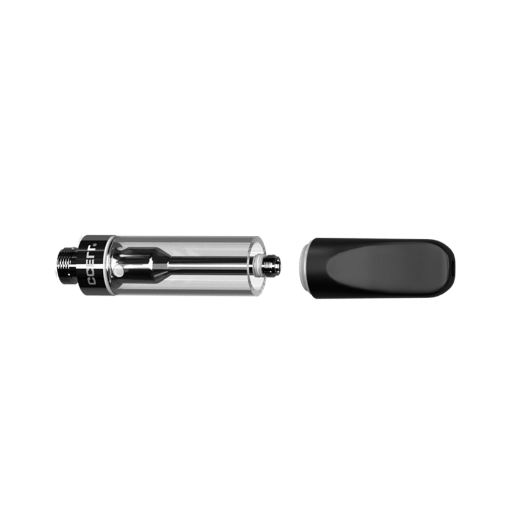
Gathering the Right Tools: Needle Nose Pliers and More
The tools necessary for the safe handling of a vape device while opening a cartridge are given. Use these tools in the most effective manner when opening a vape.
- Needle Nose Pliers: Pliers set needle nose serves the purpose of removing the mouth piece of the cartridge using minimal force and if so, then it secure the part with maximum grip. Hoisting tools of this type does not bend th parts of the Equipment therefore, is optimal for use.
- Micro Screwdrivers: A set of precision micro screwdrivers will come in handy for features of the cartridge that have a small screw. Confirm that the micro screw drivers used is of flathead or torx type with a matching tip for the screw that must not be stripped, rounded or otherwise lost.
- Soft Cloth or Rubber Grip Pads: These serve as protection to the body of the device in question through their secure grip. Besides, rubber grip pads can serve multifunctionally by gripping more securely through a torque application and thus avoiding sliding.
- Isopropyl Alcohol (99%) and Cotton Swabs: High purity isopropyl alcohol acts to clean the sticky build up of the device parts. Exercise caution though, as the electronic bits of the component will be damaged when approached these.
- Digital Multimeter: A digital multimeter is optional if you need to test for electrical continuity of the coil or circuit. As you already know, resistance values should match the manufacturer’s guidelines for work specifications and are usually between 0.5 to 3.0 ohms, depending on the coil type.
Having each tool at hand and properly used will ensure that the disassembly and troubleshooting of the vape cartridge is completed accurately and precisely.
How to Properly Unscrew a Vape Cart
For effortless disassembly, here’s how to unscrew the vape cartridge WITHOUT causing damage:
- Power Off First: First things first, you must turn off the vape device to guard against any unintentional engagement or short-circuiting.
- Use the Right Fingers: Grab the base of the vape cartridge without the mouthpiece,e as it is too fragile. If the wrong areas are stressed, misalignment or breakage might occur.
- Rotate Slowly in the Opposite Direction: Moderate force can be applied by twisting the cartridge in the opposite direction gently. Applying high torque can damage the connection or cause the threads to be stripped. Standard threading is usually used by vape cartridges, 510 threads and a pitch of around 0.5 mm are the most common.
- Look for Hurdle: If any debris or residue is obstructing the threads, the cartridge may not loosen easily. Residue buildup is easily removable with a soft cloth or with a sprinkle of isopropyl alcohol (90 % purity or above).
- Tools are Only to be Used as a Last Resort: Unless completely indispensable, pliers and tools should not be used as they run the risk of deforming the cartridge. Without proper grips or soft protectors, the technical tools are bound to make the situation worse which is NOT ideal for assistance.
With the following instructions and proper handling methods, you can safely and effectively unscrew a vape cartridge for maintenance or for replacement purposes. If you experience any resistance or technical difficulties progressing through the cartridge, check the cartridge along with the threading for possible faults.
Can You Refill a Disposable Vape Cartridge?
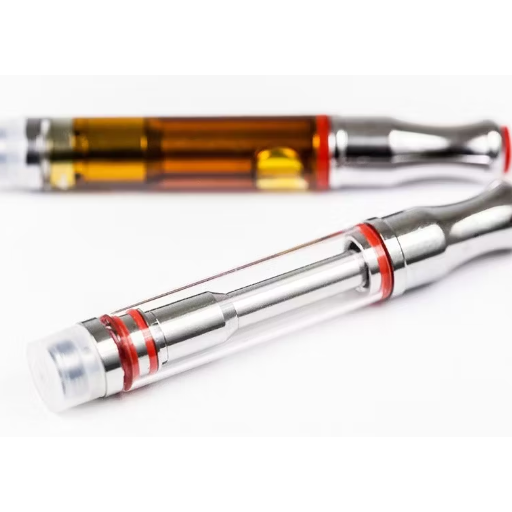
The Difference Between Disposable and Refillable Carts
Disposable and refillable vape cartridges differ primarily in their construction, operation, and purpose. Refillable cartridges come with a chamber that can be filled multiple times while disposables are pre-filled and meant for single use. They are built using non-refillable, pre-sealed reservoirs which makes refilles impossible without the unit’s integrity being breched. This approach guarantees effortless simplicity and comfort while simultaneously restricting options for custom made designs, incrementing waste produced.
Oppositely, refillable cartridges, as the name suggests, come with a fillable chamber that allows them to be used multiple times. Added features such as high durability, integrated silicone seals, and ports for refillable e-liquids make it easier for them to be refilled. Compatible refillable e-liquids are necessary, along with proper viscosity- typically 50/50 VG/PG for balanced performance or higher VG for sub-ohm devices. While costly, refillable carts provide more options in terms of flavor and nicotine concentration and are cost-efficient over time.
From a technical perspective, disposables usually employ low capacity build in batteries for ease of use, while refillable versions are frequently used in conjunction with more powerful reusable batteries to enable extended use of the device. In short, disposable options cater convenience, while refillable variants assist users looking for control over the vaping experience.
Why Some Disposable Carts Cannot Be Refilled
The refilling problems of some disposable carts stem from the structure’s design and the materials that make it. These carts are designed for single use, with sealed chambers and non-replaceable parts that allow for easy disposability and leakage prevention.
- Material Composition: Many disposable carts do utilize thinner grade plastic or weak alloys of metal intended for. Such a short duration of use does not assure for sustained usage or prolonged handling, nor withstand the chemical stressors from multiple refills.
- Sealed Construction: Plastics or thin seals like those use in disposable construction may include non openable partitions with chambers. These are intended for air-tight integrity without regard for structural integrity when reopening.
- Heating Element Design: Disposable carts frequently incorporate non-replaceable heating coils with limited lifespans. Within intended cycles, these carts will suffer from performance issues (claimer heating, unwanted byproducts).
- Capacity: In these types of carts, the integrated battery systems are relatively small and only intended to serve one life disposable cycle. Given the single-life capacity, no recharging can be done for these batteries, and thus provide little utility for refilling.
These material and treatment aspects show that the design philosophy is convenience and hygiene-oriented, particularly for single-use purposes.
What to Do If You Cannot Open a Cart?
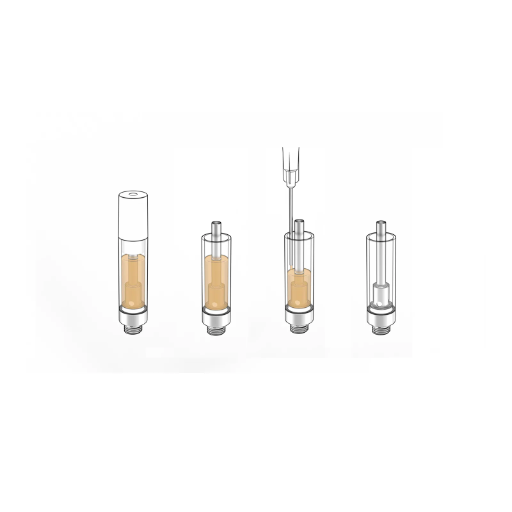
When to Seek Help from a Vape Shop
In an instance where you are unable to open a vape cart, it is best to visit a professional vape shop under the following conditions:
- Design Damage or Defects: In case the cart appears broken from some angle (like the housing being cracked or the threading being distorted), technicians can check if it is possible to fix it or if there is a need to get it replaced. It can require some thinking in terms of the cart’s material properties, for instance, how it’s structurally sound or how it interacts with e-liquid ingredients.
- Threading or Other Compatibility Problems: Some carts may use substandard threading that is unlike 510-thread mismatches and that prevents it from being fitted properly in your device. The vape shop personnel may have tools which can fix that problem or suggest something else.
- Failure of Internal Mechanism: If the integrated airflow control system or the seals look to be inoperative, some skill is needed for them to avoid the leak when the inhalation pressure is applied. This always includes looking at how the cart is internally manufactured and how precise the tolerances are.
- Battery or Electric Considerations: For carts suspected of having a disposable built in battery, some tools should be used to test whether they work at all, primarily the known voltage output like 3.3-4.2 volts for small cells.
Vape shops employ trained personnel who possess the skills and tools to fix these problems effectively while ensuring that your device works well and is safe. If the issue cannot be fixed on the spot, they are often able to suggest appropriate replacement parts or other devices that would work with your device.
Alternatives to Opening a Vape Cart
There are multiple ways to fix a malfunctioning vape cartridge or device other without physically opening it. For an initial step, check if the battery connection is clean because poor connectivity is usually the issue. Also, check the voltage settings on the battery as many devices come with adjustable voltage. Set it between 3.3 to 4.2 volts because if the cartridge isn’t compatible the other settings would be useless.
If the vape isn’t producing vapor, verify whether the airflow is being obstructed. Blockages can be resolved by gently cleaning the mouthpiece and connection ports with isopropyl alcohol and a cotton swab without dismantling the cart. You can also use a preheat function on your battery (if available) to warm the thicker oils before vaping, which requires no invasive actions at all.
For reusable carts, consider transferring the remaining oil into a new compatible cartridge or refillable pod system and use a syringe for safe and precise handling of the liquid. This helps lower the waste significantly. Seeking professional help would be the best option so the cartridge or device does not get damaged when trying to fix it.
Following these options and checking tech specs like voltage and airflow paths can help solve problems without damaging your vape cart or creating safety risks.
Maintaining Your Vape Pen for Optimal Performance
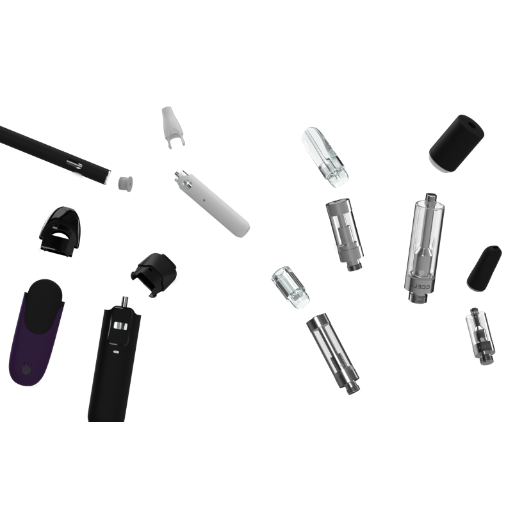
Regular Cleaning and Maintenance Tips
Just like every other device, a vape pen needs routine and thorough maintenance, in this case cleaning, to work optimally. It can start with carefully unscrewing the vape pen according to the company guidelines. The mouthpiece and chamber can be cleaned by the use of a cotton swab dipped in isopropyl alcohol (with a pureness higher than 90% and that is 90%). Be careful with the amount of moisture you utilize as sensitive parts like the heating element should not be soaked.
Moreover, the battery connector points need maintenance, too, through gentle swipes with a lint-free cloth to take off any unwanted materials and oxidation. From a more technical perspective, it’s best that the voltage a modern vape tube runs on, from 3.2V to 4.2V, is followed to prevent putting too much strain on the battery and cartridge; that range is considered healthy. Blockages that influence the amount of vapor produced and the efficiency of the heating should not be present. To determine that, users need to blow into the device to check if the ways for airflow are unblocked.
Performing these maintenance practices consistently will ensure the vape pen lasts longer and keeps the user satisfied and safe.
Ensuring Longevity of Your Vape Cartridges
Maximizing the lifespan of your vape cartridges requires optimal environmental conditions for storage. That’s why your cartridges should be stored in a cool, dry place where direct sunlight or excessive heat will not reach them. If not, high temperatures will cause the oil to thin and lead to leaks or worse performance. A comfortable 60°F to 70°F is ideal for your cartridges.
To prolong the lifespan of your cartridges, always remember to store them upright. This ensures oil is uniformly distributed which impact the heating mechanism. In addition to that, always securely cover the mouthpiece and connections to reduce oxidation which leads to prolonged air exposure. Oil flavor and potency both get degraded after air exposure.
While attaching a cartridge to a battery, ensure that the voltage output matches the optimal operating range. Between 2.5V and 3.8V is the sweet spot, but always refer to manufacturer specifications first. Anything more than that will overheat the cartridge, which results in burnt flavors and damaged heating coils.
Following these guidelines can further increase the vapor quality while extending the functional life of the cartridges.
Reference sources
Frequently Asked Questions (FAQs)
Q: What is a 510 cartridge, and why is it popular among vaping enthusiasts?
A: A 510 cartridge is a type of vape cartridge that features a threading design compatible with most vape batteries, making it a popular choice among vaping enthusiasts. Its versatility allows it to be used with various types of cannabis oils, including THC and CBD.
Q: How do I open a THC or CBD cart safely?
A: To open a THC or CBD cart safely, start by securing the cartridge in a vise grip to stabilize it. Carefully twist the cart’s mouthpiece counterclockwise to remove it. Be cautious to avoid damaging the cart during the opening process.
Q: Can I refill a prefilled vape cart, and how?
A: Yes, you can refill some prefilled vape carts. After opening the cart, use a syringe to add cannabis oil or CBD oil into the cartridge. Make sure not to overfill it to prevent leakage. Many non-refillable carts, however, are not designed for refilling, so proceed with caution.
Q: What types of vape cartridges are available for THC and CBD oils?
A: There are various types of vape cartridges available, including CCell cartridges, standard 510 threaded weed carts, and disposable cartridges. Each type offers different features and compatibility, so choosing the right one depends on your vaping preferences and device compatibility.
Q: What should I do if the oil in my vape cart is too thick to remove?
A: If the oil is too thick, you can use heat to make it more fluid. A hair dryer can gently warm the cartridge, allowing the oil to flow more easily. Be careful not to apply too much heat, as this can damage the cartridge.
Q: Is it possible to open a weed cart without damaging it?
A: Yes, it is possible to open a weed cart without damaging it by using the right tools and techniques, such as a vise grip for stability and gently twisting the mouthpiece counterclockwise. Patience and careful handling are key to preventing damage during the opening process.
Q: What are the benefits of using CCell cartridges for vaping?
A: CCell cartridges are known for their efficient heating elements that provide consistent vaporization without combustion. They are highly durable and designed to maximize the flavor and potency of cannabis oils, making them a preferred choice for many vapers.
Q: Why should I avoid overfilling my vape cart?
A: Overfilling a vape cart can lead to leakage and improper vaporization, which can affect the quality of your vaping experience. It can also cause clogging and reduce the lifespan of the cartridge, so it’s important to fill it to the recommended level.
Q: How can I remove oil from an empty vape cart for reuse?
A: To remove oil from an empty vape cart, open the cartridge carefully and use a syringe or dab tool to extract the remaining oil. This can then be transferred to another cartridge or used as a dab. Ensure the tools used are clean to prevent contamination.







